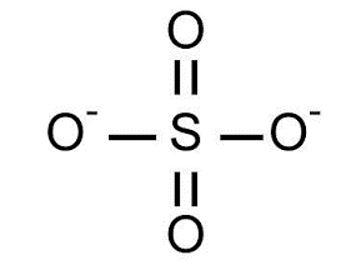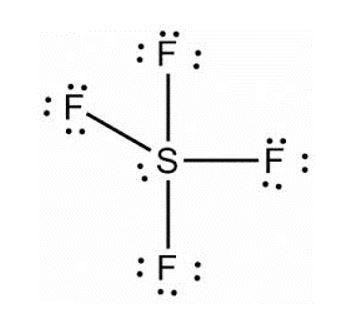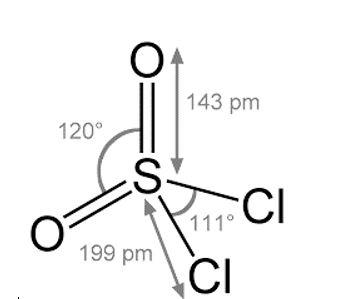
Which of the following does not have a tetrahedral structure?
(A) \[{\text{SO}}_4^{ - 2}\]
(B) \[{\text{S}}{{\text{F}}_4}\]
(C) \[{\text{S}}{{\text{O}}_2}{\text{C}}{{\text{l}}_2}\]
(D) \[{\text{SeO}}_4^{ - 2}\]
Answer
218.7k+ views
Hint: Based on the number of electron pairs that surround the central metal atom, in a molecule, VSEPR theory predicts the shape and geometry of the molecule.
Complete step by step answer: VSEPR theory states that electron pairs repel each other and hence atoms in a molecule will always arrange themselves in a manner such that there is minimum repulsion between their electron pairs. This arrangement directly affects the shape and geometry of the molecule. Based on this assumption, let us take a look at the shapes of the molecules mentioned above –
- \[{\text{SO}}_4^{ - 2}\]


• \[{\text{S}}{{\text{O}}_2}{\text{C}}{{\text{l}}_2}\]

• \[{\text{SeO}}_4^{ - 2}\]

According to VSEPR theory, there are five groups in molecule i.e. one lone pair and 4 bonds around sulphur. This lone pair is present at one of the equatorial positions than the axial ones. Hence, the shape of the molecule is trigonal bipyramidal and not tetragonal.
molecule i.e. one lone pair and 4 bonds around sulphur. This lone pair is present at one of the equatorial positions than the axial ones. Hence, the shape of the molecule is trigonal bipyramidal and not tetragonal.
Hence, option B is correct.
Additional information: According to the VSEPR theory, the repulsion between two electrons is caused by the Pauli exclusion principle. Some important postulates of VSEPR theory are –
- The electron pairs orient themselves in a way that minimizes the electron-electron repulsion between them and maximizes the distance between them.
- If the central atom of the molecule is surrounded by bond pairs of electrons, then the molecule will be asymmetric in shape.
- If the central atom is surrounded by both lone pairs and bond pairs of electrons, the molecule will have a distorted shape.
Note: Out of the options mentioned above, all molecules except \[{\text{S}}{{\text{F}}_4}\] have four groups that surround the central atom and hence all have tetrahedral shape.
Complete step by step answer: VSEPR theory states that electron pairs repel each other and hence atoms in a molecule will always arrange themselves in a manner such that there is minimum repulsion between their electron pairs. This arrangement directly affects the shape and geometry of the molecule. Based on this assumption, let us take a look at the shapes of the molecules mentioned above –
- \[{\text{SO}}_4^{ - 2}\]

- • \[{\text{S}}{{\text{F}}_4}\]



According to VSEPR theory, there are five groups in
 molecule i.e. one lone pair and 4 bonds around sulphur. This lone pair is present at one of the equatorial positions than the axial ones. Hence, the shape of the molecule is trigonal bipyramidal and not tetragonal.
molecule i.e. one lone pair and 4 bonds around sulphur. This lone pair is present at one of the equatorial positions than the axial ones. Hence, the shape of the molecule is trigonal bipyramidal and not tetragonal. Hence, option B is correct.
Additional information: According to the VSEPR theory, the repulsion between two electrons is caused by the Pauli exclusion principle. Some important postulates of VSEPR theory are –
- The electron pairs orient themselves in a way that minimizes the electron-electron repulsion between them and maximizes the distance between them.
- If the central atom of the molecule is surrounded by bond pairs of electrons, then the molecule will be asymmetric in shape.
- If the central atom is surrounded by both lone pairs and bond pairs of electrons, the molecule will have a distorted shape.
Note: Out of the options mentioned above, all molecules except \[{\text{S}}{{\text{F}}_4}\] have four groups that surround the central atom and hence all have tetrahedral shape.
Recently Updated Pages
The hybridization and shape of NH2 ion are a sp2 and class 11 chemistry JEE_Main

What is the pH of 001 M solution of HCl a 1 b 10 c class 11 chemistry JEE_Main

Aromatization of nhexane gives A Benzene B Toluene class 11 chemistry JEE_Main

Show how you will synthesise i 1Phenylethanol from class 11 chemistry JEE_Main

The enolic form of acetone contains a 10sigma bonds class 11 chemistry JEE_Main

Which of the following Compounds does not exhibit tautomerism class 11 chemistry JEE_Main

Trending doubts
JEE Main 2026: Application Form Open, Exam Dates, Syllabus, Eligibility & Question Papers

Derivation of Equation of Trajectory Explained for Students

Hybridisation in Chemistry – Concept, Types & Applications

Understanding the Angle of Deviation in a Prism

Understanding Collisions: Types and Examples for Students

Understanding Atomic Structure for Beginners

Other Pages
NCERT Solutions For Class 11 Chemistry Chapter 7 Redox Reaction

JEE Advanced Marks vs Ranks 2025: Understanding Category-wise Qualifying Marks and Previous Year Cut-offs

Thermodynamics Class 11 Chemistry Chapter 5 CBSE Notes - 2025-26

NCERT Solutions ForClass 11 Chemistry Chapter Chapter 5 Thermodynamics

Equilibrium Class 11 Chemistry Chapter 6 CBSE Notes - 2025-26

How to Convert a Galvanometer into an Ammeter or Voltmeter




